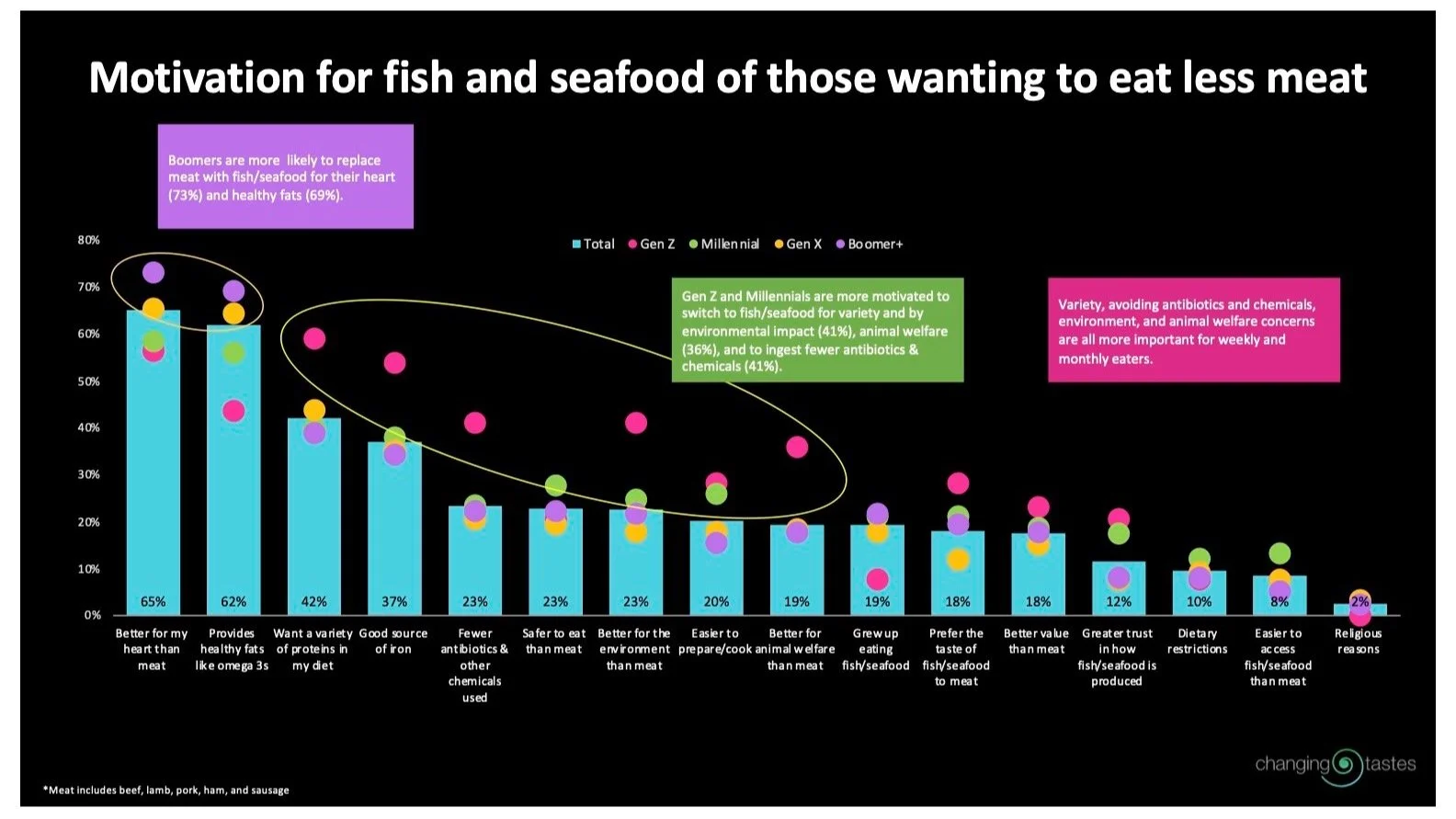BUSINESS TO BUSINESS
THE MESSAGE:
Seafood is the Right Protein Choice
Why is seafood the right protein choice for you to offer your customers? Over a third of American consumers intend to change how they eat in the coming year or two by reducing how much meat they eat. Their top choice is to replace some of the red meat they eat with fish and seafood. This represents one of the biggest changes in the marketplace in a generation or more.
But consumers have some concerns about making the switch. With the right messages, you can help them act on their intentions and increase your sales of fish and seafood.
Fish and seafood is, and has been, central to healthy food offerings and satisfying those who focus on healthy eating when grocery shopping or dining. Seafood is a more nutritious, flexible, and delicious choice. It’s also a more popular choice than manufactured meat alternatives.
Seafood also leads in sustainability, which is frequently where consumers have concerns, especially Millennials and Gen Zers who are most likely to eat more if their concerns are met.
Most seafood is antibiotic free. There are no antibiotics used in wild caught fish and seafood and many types of farmed fish and shellfish are produced without antibiotics. There are broad commitments from some in the farmed seafood industry to eliminate antibiotics at a faster rate than other proteins with real progress being made. There is now farmed salmon on the market produced without antibiotics and the U.S. government is increasing monitoring of farmed shrimp imports for antibiotic residue before allowing them into the U.S. With industry efforts to eliminate antibiotics underway, increasing your sales of fish and seafood can also help achieve your company’s goals to reduce antibiotics if you have one.
The seafood industry is addressing ocean plastic pollution. One of the biggest consumer concerns right now is accidentally eating micro-plastics when they eat fish and seafood. This is a real concern, and the environmental and health effects are still being discovered. The seafood industry is working to prevent plastic pollution in our oceans. Plastic products like lines and nets used in commercial fishing has been a major source of ocean plastic pollution and is sometimes called ghost gear as it continues to drift after the fishing boats leave. Leading fishing companies now are taking steps to avoid adding plastic pollution to our oceans and become plastic neutral.
More fish and seafood can lower our carbon footprint. Americans are changing the mix of proteins we eat and it’s making a big difference for our environment. The changes we’ve made since 2005 have helped us achieve 15% of U.S. carbon reduction goals. If we choose fish and seafood for just one more meal a week instead of meat, we can get to 20%. That’s because most fish and seafood has a lower carbon footprint than meat.
We can also reduce our carbon footprint with some simple changes to the assortment of fish and seafood we eat. Air freighted farmed salmon, intensively farmed shrimp and fish caught using bottom trawling all have higher carbon footprints than other choices. They’re also the kinds of fish and seafood that are usually not rated or certified as sustainable. Buying sustainable seafood is a good move towards a lower carbon footprint.
Market Insight
There are lots of reasons that your customers think fish and seafood are the right choice, especially for about 4 out of 10 American adults who are interested in changing what they eat in the next year or two. Motivations vary by generation, or age. For younger consumers, variety and reducing the environmental impact of their food choices are both top of mind.


